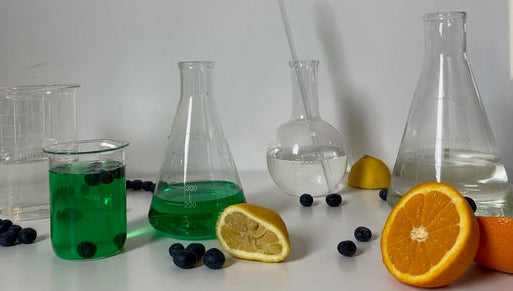WHAT IS AN INCI LIST?
Do you ever read the back of your favorite moisturizer? Odds are there are some words you have never heard of before or can easily pronounce. In a world of confusing ingredients, we are here to clarify cosmetic labelling.
The nomenclature for all cosmetics ingredients is given according to the International Nomenclature Cosmetic Ingredient (INCI) database published by the Personal Care Products Council (PCPC) [1]. There is a need for a consistent naming system to maintain the integrity of ingredients in an accurate and transparent manner for the consumer. This sentiment is mirrored in scientific publications, where a uniform name can be referenced to ensure that all the research regarding said ingredient is cataloged correctly [1].What’s important to note is that the INCI is just a database of cosmetic ingredients. An ingredient can have an INCI nomenclature but not be approved for cosmetic use [1].
The INCI classification of names may seem overwhelming but knowing how to read them can provide you a sense of control when choosing a product off the shelves. For example, a common ingredient in skincare, Vitamin E is also known as Tocopherol [2].
HOW TO READ AN INCI LIST
The ingredient list on any consumer product is tightly regulated by the Food and Drug Administration (FDA) [3]. The following are the major stipulations enforced by the FDA.
- Ingredient order: Ingredients on a cosmetic label are listed in descending order with the highest percentage product ingredient found at the top. The order that follows is decreasing in percentage until 1% composition is reached. After 1%, the ingredients can be listed in any order. There also may be an “active ingredient” classification where an ingredient of interest is highlighted, usually to identify a concern. An example is salicylic acid, used as the active ingredient in acne products [4].
- Allergens: Below the ingredient list is a warning for common allergens found in the product. An example could be fragrances, preservatives or dyes.
A good source to use in order to cross reference for ingredient safety is the EWG Skin Deep site [5]. EWG is a user-friendly resource to look at individual ingredients or the whole product breakdown of any health hazards the ingredient(s) may be associated with [5].EWG classifies a product’s ingredients and ranks them on a basis of allergy, cancer and developmental hazards. Further, each individual ingredient is categorized as safe, fair or limited in how they should be used [5].
CALL OUT INGREDIENTS TO AVOID
An important aspect to understanding an INCI is identifying which products to avoid.BEAUTOLOGY LAB has compiled a short list of 48 ingredients based off of our CLEANER STANDARDS list of 2,700+ ingredients to avoid so you have a head start [6]. Here are some examples of ingredients on that list [7-14]:
- Petroleum-based PEG compounds(polyethylene glycols)
- Petrolatum
- Fragrance
- Parabans
- Formaldehyde-releasing ingredients
- DEA, TEA, or MEA
- SLS
- BHA (butylated hydroxyanisole) and BHT (butylated hydroxytoluene)
An INCI can be both confusing and informative when it comes to identifying what products to buy. Knowledge of how to read an INCI will give you the power to be a responsible patron for your skin and our health.
Sources:
1. https://www.personalcarecouncil.org/resources/inci/
2. Khadangi F, Azzi A. Vitamin E - The Next 100 Years. IUBMB Life. 2019 Apr;71(4):411-415. doi: 10.1002/iub.1990. Epub 2018 Dec 14. PMID: 30550633.
3. https://www.fda.gov/cosmetics/cosmetics-labeling-regulations/cosmetics-labeling-guide
4. https://www.healthline.com/health/skin/salicylic-acid-for-acne
5. https://www.ewg.org/skindeep/
6. https://beautologylab.com/pages/cleaner-standards
7. (https://www.madesafe.org/chemicalcallout-polyethylene-glycol-compounds-pegs/)
8. (https://davidsuzuki.org/queen-of-green/dirty-dozen-petrolatum/)
9. https://beautologylab.com/blogs/lab-reads/minimizing-risk-in-fragrance
10. (https://davidsuzuki.org/queen-of-green/dirty-dozen-parabens/)
11. (https://davidsuzuki.org/queen-of-green/dirty-dozen-formaldehyde-releasing-preservatives/)
12. (https://davidsuzuki.org/queen-of-green/the-dirty-dozen-dea-related-ingredients/)
13. (https://davidsuzuki.org/queen-of-green/dirty-dozen-sodium-laureth-sulfate/)
14. (https://davidsuzuki.org/queen-of-green/dirty-dozen-bha-bht/)
